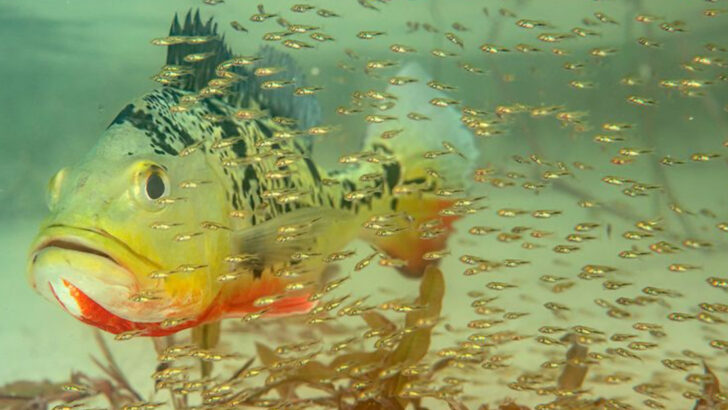Some of the most dangerous invaders in America don’t walk—they swim.
These underwater troublemakers don’t care about borders, balance, or biodiversity. They charge in, throw off the food chain, bully the locals, and multiply like it’s their full-time job.
Native fish? Outcompeted. Habitats? Wrecked. Conservation efforts? Spinning their wheels trying to keep up. These freshwater fish aren’t just visitors—they’re full-blown aquatic anarchists.
Brace yourself for a tour of the 12 most aggressive freshwater fish that have muscled their way into U.S. waterways. They’re bold, they’re ruthless, and they’ve got no plans to leave.
Northern Snakehead
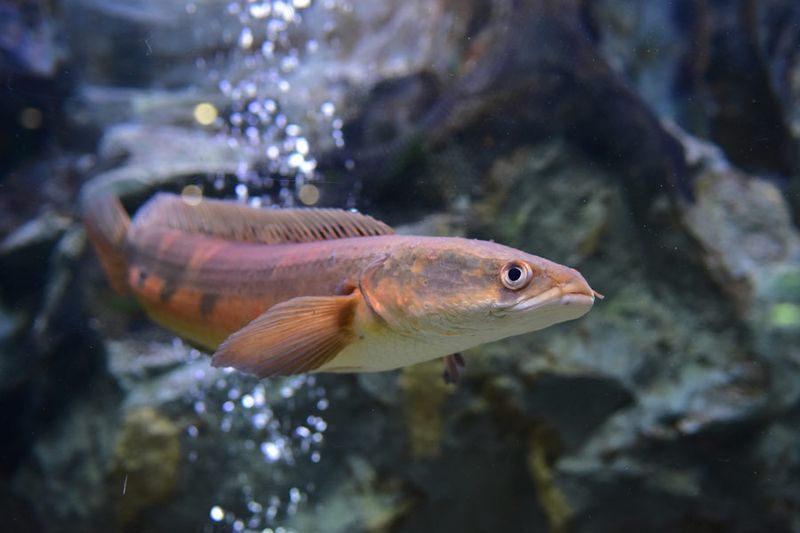
The Northern Snakehead is a formidable predator. Known for its elongated body and sharp teeth, this fish dominates its prey. Found in various U.S. states, it has a voracious appetite for other fish and even small mammals.
With a unique ability to survive on land for short periods, the Northern Snakehead can move between water bodies, making it particularly invasive. Its presence in waterways has led to declines in native fish populations.
Conservationists are concerned about its impact on local ecosystems. This invasive species underscores the need for vigilance in managing aquatic ecosystems.
Asian Carp
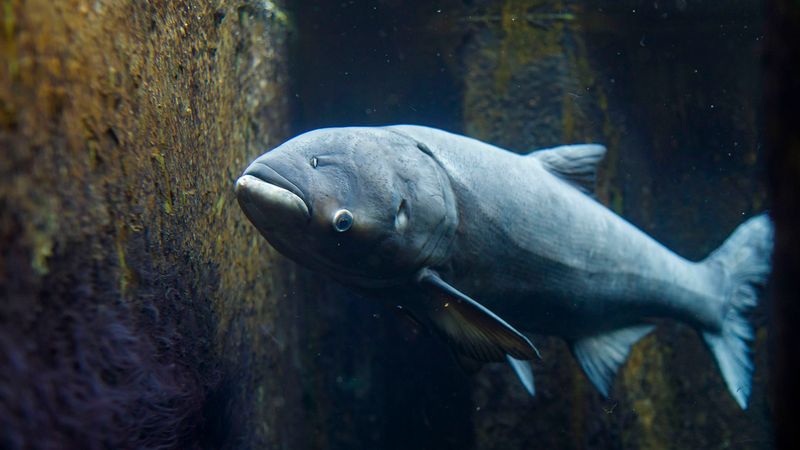
Asian Carp have become notorious for their incredible jumping abilities and rapid population growth. These fish consume vast amounts of plankton, outcompeting native species.
Found in rivers and lakes across the Midwest, their presence disrupts local ecosystems by altering the food chain. Boaters are often startled by their tendency to leap out of the water, sometimes causing personal injury.
Efforts to control their spread include barriers and fishing incentives. Asian Carp’s tenacity and adaptability make them a significant problem for waterways in the United States. Their impact is a cautionary tale of ecological imbalance.
Redbellied Pacu
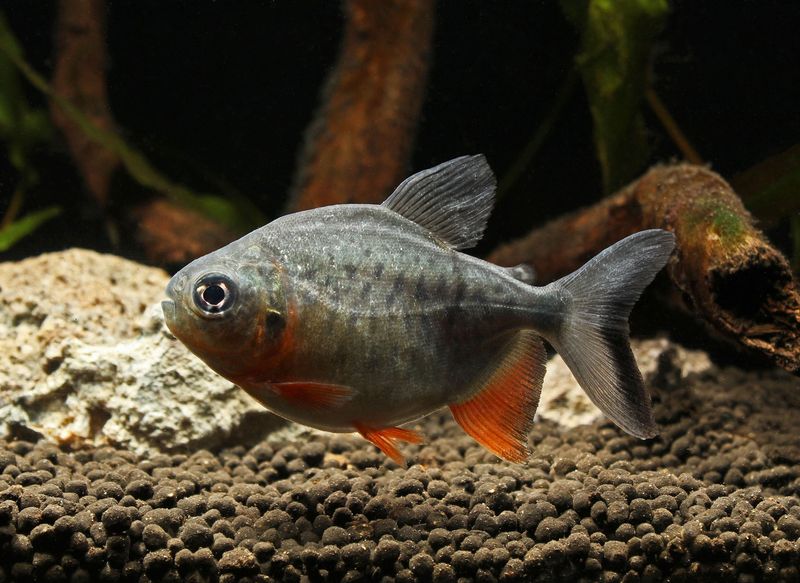
The Redbellied Pacu, with its piranha-like teeth, is not to be underestimated. Native to the Amazon, this fish has made a splash in U.S. waters with its voracious appetite.
Unlike its infamous cousin, it primarily feeds on vegetation, yet its aggressive feeding behavior can lead to significant disruptions in local flora. Imagine a lawnmower with fins, endlessly munching away.
Despite their intimidating looks, Redbellied Pacus are often introduced by pet owners who underestimated their growth. These giants can reach up to 3 feet, outgrowing home aquariums quickly.
Lionfish
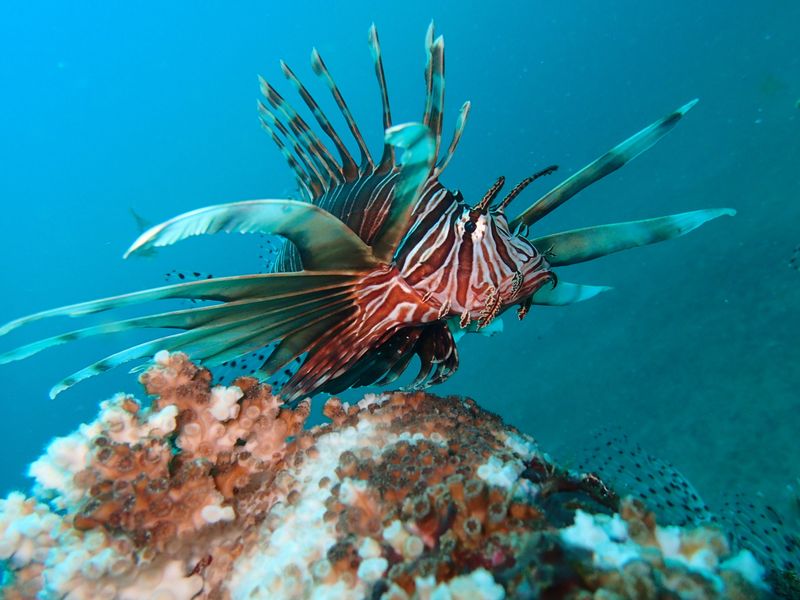
The Lionfish is a striking yet dangerous invader. Native to the Indo-Pacific, it now roams the Atlantic and Gulf of Mexico. Its venomous spines deter predators, allowing it to thrive in new environments.
Lionfish consume large quantities of native fish, disrupting coral reef ecosystems. Their beauty belies a voracious appetite and rapid reproduction rate. Efforts to control their population include organized culling events.
Divers and snorkelers are cautioned to admire from a distance. The Lionfish’s impact on marine biodiversity highlights the unintended consequences of human actions, such as aquarium releases.
Flathead Catfish
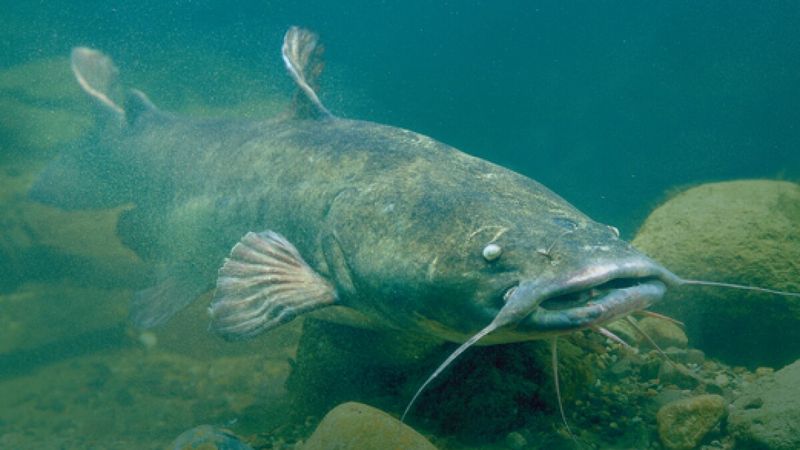
Flathead Catfish are bottom-dwelling predators with a taste for native fish. These large catfish can grow to impressive sizes, making them formidable competitors in U.S. rivers.
Known for their voracious appetites, they consume various fish species, leading to declines in local fish populations. Anglers often target them for sport, but their presence poses challenges for native species management.
Their adaptability to different water conditions enhances their invasive potential. The Flathead Catfish serves as a reminder of the delicate balance required to maintain healthy aquatic ecosystems and the ongoing battle against invasive species.
Bullseye Snakehead

The Bullseye Snakehead, with its unique eye-like markings, is an aggressive predator that has made its way into U.S. waters. Known for preying on fish and amphibians, it disrupts local ecosystems.
Its ability to breathe air allows it to survive in low-oxygen environments, providing a competitive edge. Found primarily in the warmer waters of Florida, its presence raises concerns for native species.
Efforts to control its spread include public awareness and targeted removal. The Bullseye Snakehead’s adaptability and predatory nature exemplify the challenges of managing invasive species in fragile ecosystems.
Eurasian Ruffe
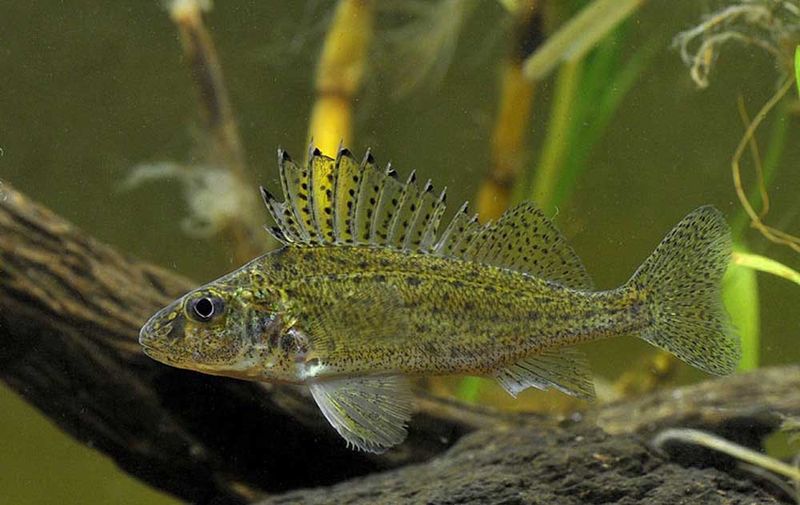
The Eurasian Ruffe, with its spiny dorsal fin, is a small yet aggressive invasive species. Originating from Europe, it has established populations in the Great Lakes. Competing with native fish for food and habitat, it poses a threat to local ecosystems.
Its rapid reproduction rate and adaptability make it difficult to manage. Conservation efforts focus on monitoring and controlling its spread.
The Eurasian Ruffe’s presence serves as a stark reminder of the complex challenges invasive species pose to biodiversity. Their impact on native fish communities is a significant concern for ecologists.
Round Goby
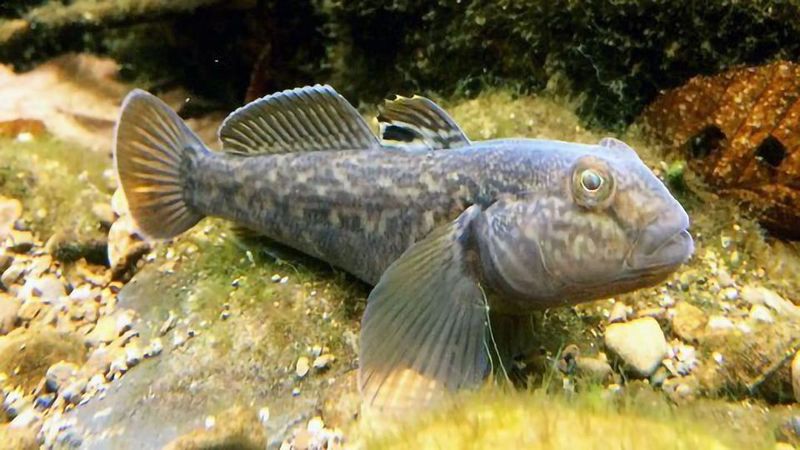
Round Gobies, with their distinctive mottled appearance, have become a common sight in the Great Lakes. These small, aggressive fish outcompete native species for food and habitat.
Their presence has altered the dynamics of local ecosystems, leading to declines in native fish populations. Round Gobies consume the eggs and young of other fish, impacting reproductive success. Efforts to manage their spread include trapping and public awareness campaigns.
Their adaptability and competitive nature make them a persistent challenge for conservationists. The Round Goby’s story is one of ecological disruption and the ongoing struggle to manage invasive species.
Peacock Bass

The Peacock Bass, with its striking colors and bold personality, often turns heads. Originally from South America, it now fishes for attention in U.S. waters.
Regarded as a top predator, it preys on smaller fish, altering the delicate ecological balance. Its aggressive hunting tactics leave local species struggling to survive.
Anglers are drawn to the thrill of catching this feisty fish, but its presence causes both ecological and recreational ripple effects.
Blue Tilapia
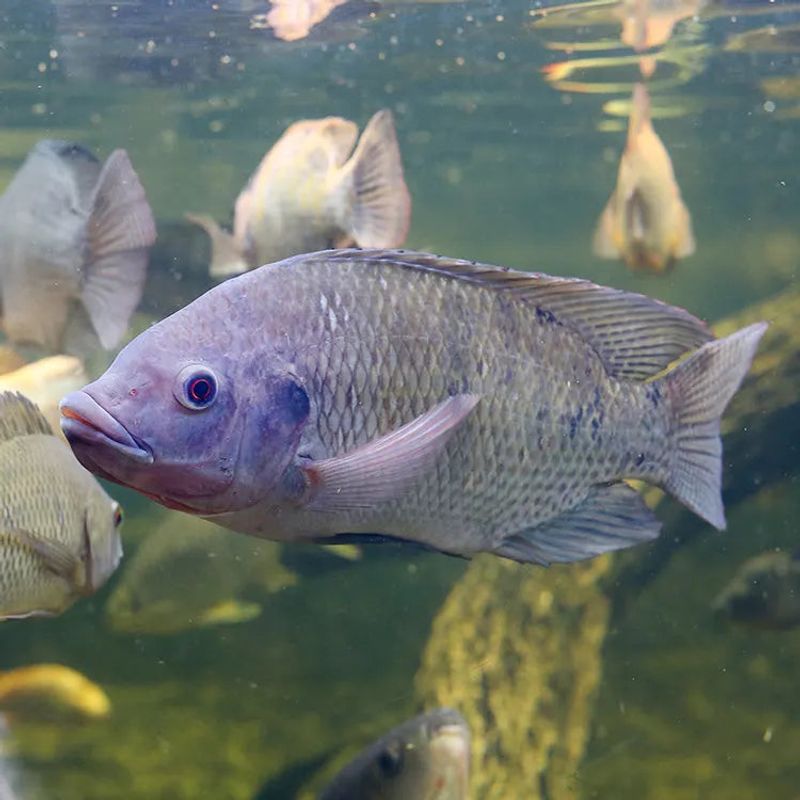
Blue Tilapia, with their bluish hue and robust bodies, are aggressive competitors in U.S. freshwater ecosystems. Introduced for aquaculture, they have spread to various states, disrupting local fish populations.
Their ability to thrive in different water conditions adds to their invasive potential. Blue Tilapia consume vast amounts of plant material, altering the ecological balance of their habitats.
Management efforts focus on population control and habitat restoration. Their adaptability and impact on native species highlight the complex nature of invasive species management. The Blue Tilapia’s story is one of unintended consequences and ecological challenges.
Green Sunfish
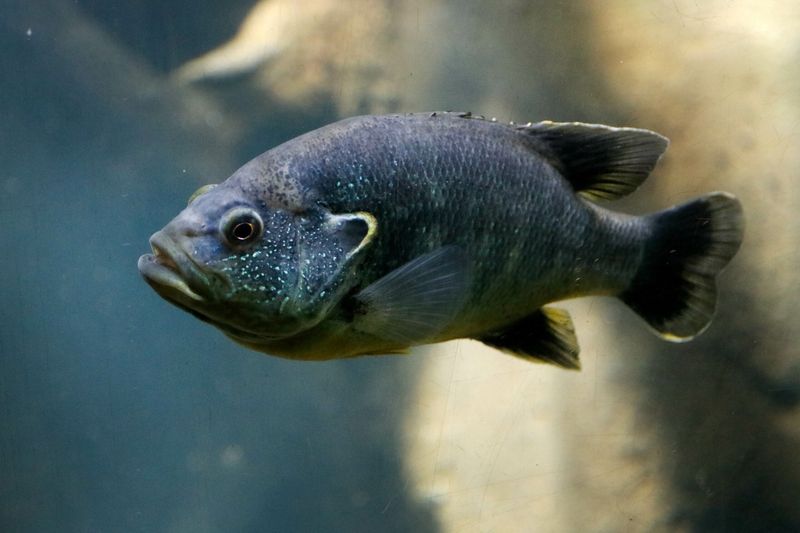
With dazzling green and orange hues, the Green Sunfish is as bold as it is beautiful. This North American native has ventured beyond its usual range, invading waters where it wasn’t welcome.
Known for its hostile takeover of habitats, it competes fiercely with local species for food and space. Its territorial nature makes it a dominant force, unsettling delicate ecosystems.
While admired for its resilience, the Green Sunfish often leads to reduced biodiversity in its adopted environments.
Oscars
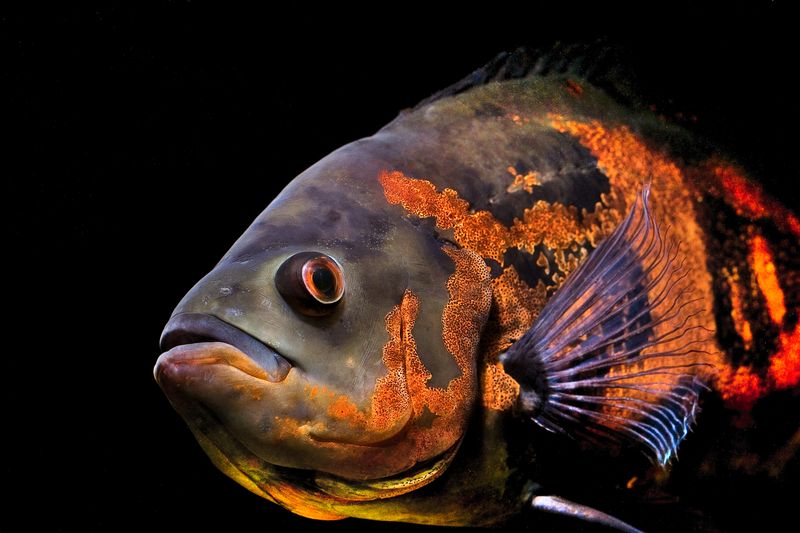
Oscars, with their vibrant orange and black patterns, are charismatic characters in the aquarium world. However, their release into U.S. waters turned them into unexpected invaders.
Feeding on smaller fish and even insects, their dietary habits disrupt food chains, causing ecological imbalance. Think of them as unwanted guests at a fishy banquet.
Their popularity in the pet trade doesn’t translate well to open waters, where they often outcompete and overshadow native species.

